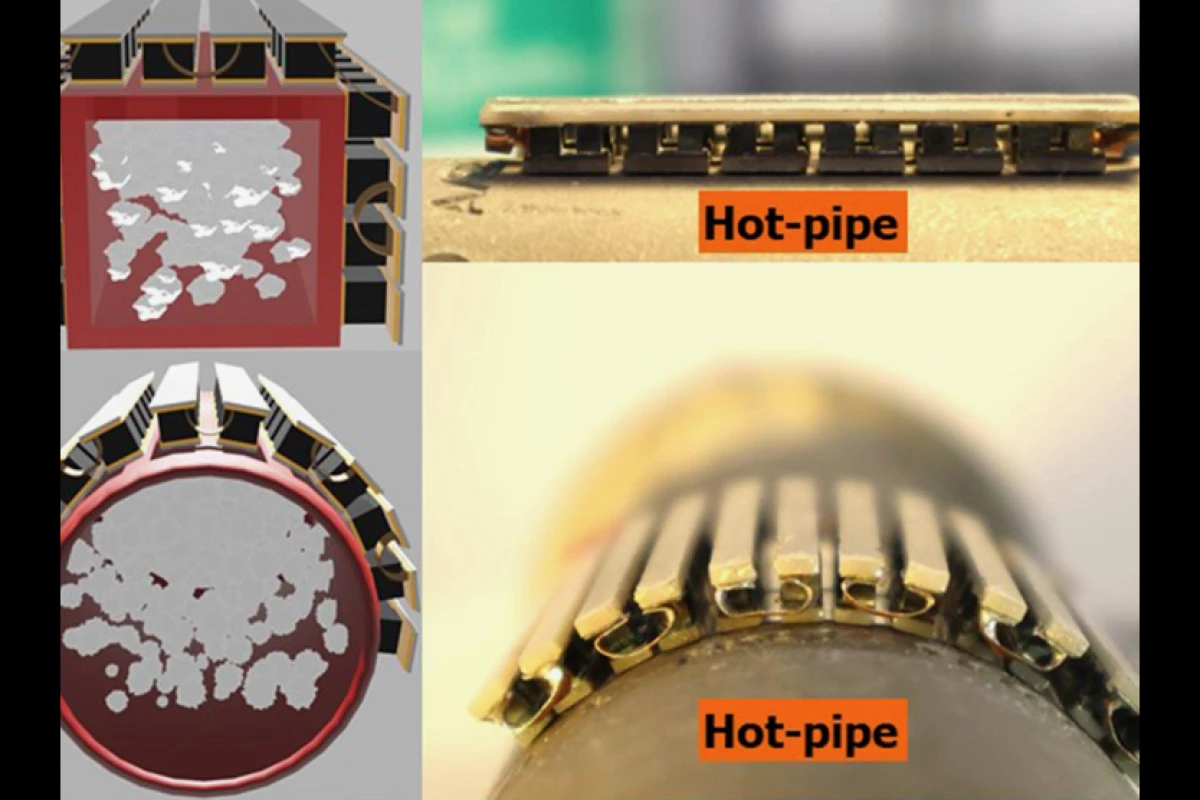We've already heard about hoses that get wrapped around existing hot water pipes, using heat radiated from the pipe to heat water inside the hose. A new wrap-around device, however, uses that same pipe-heat to generate electricity.
Created via a collaboration between Pennsylvania State University and the National Renewable Energy Laboratory, the experimental thermoelectric device is made up of multiple flat, square modules known as couples.
More precisely, it consists of 12 rectangular strips of six couples each, with a flexible metal foil substrate electrically connecting those strips to one another. Unlike previously developed flat, rigid setups, this design allows the 72-couple device to be wrapped around hot water pipes – or other types of pipes that get hot – in a home, factory, or anyplace else.
As is the case with other thermoelectric devices, an electrical current is generated as electrons move from the warmed inner side of each couple to its cooler outer side – the greater the temperature difference between the two sides, the stronger the current. The electricity can be channeled into a grid, or used to charge a battery.
When applied to a hot gas flue pipe, the prototype is claimed to have exhibited the highest-ever reported output power and device power density from a single thermoelectric generator. In more detail, a 3-inch (76-mm)-squared version of the device utilized a 570 ºC (1,026 ºF) temperature difference to deliver a total power output of 56.6 watts.
"Think about an industrial power plant with pipes hundreds of feet long," said Penn State's Prof. Shashank Priya. "If you can wrap these devices around an area that large, you could generate kilowatts of energy from wasted heat that’s normally just being thrown away. You could convert discarded heat into something useful."
A paper on the research was recently published in the journal ACS Applied Materials & Interfaces.
Source: Penn State




